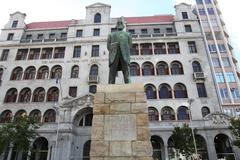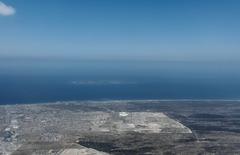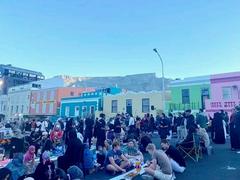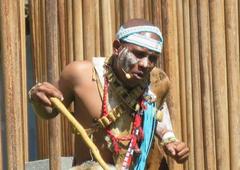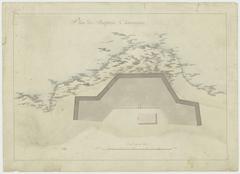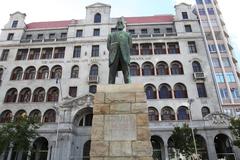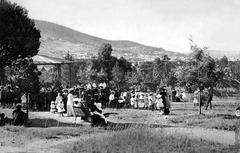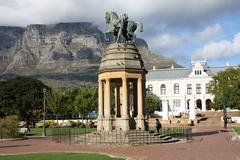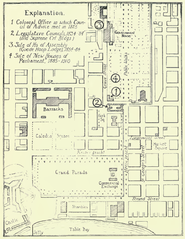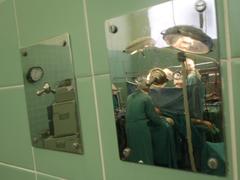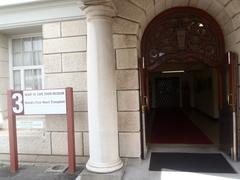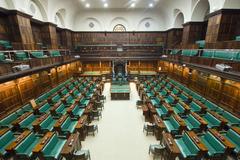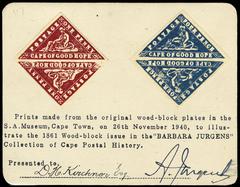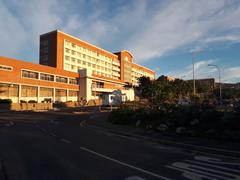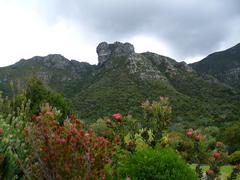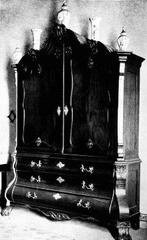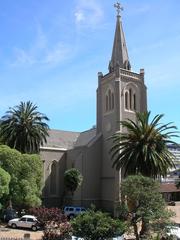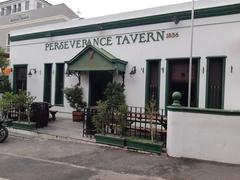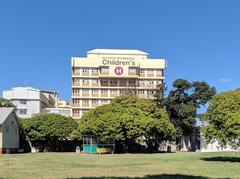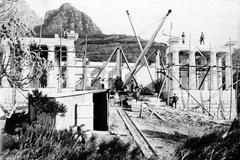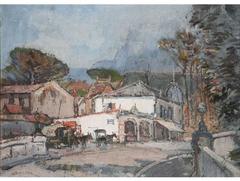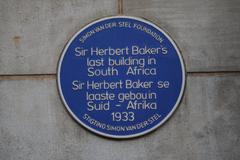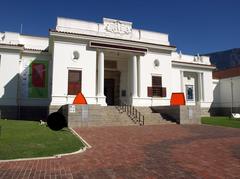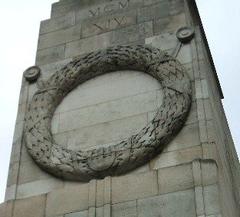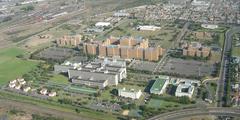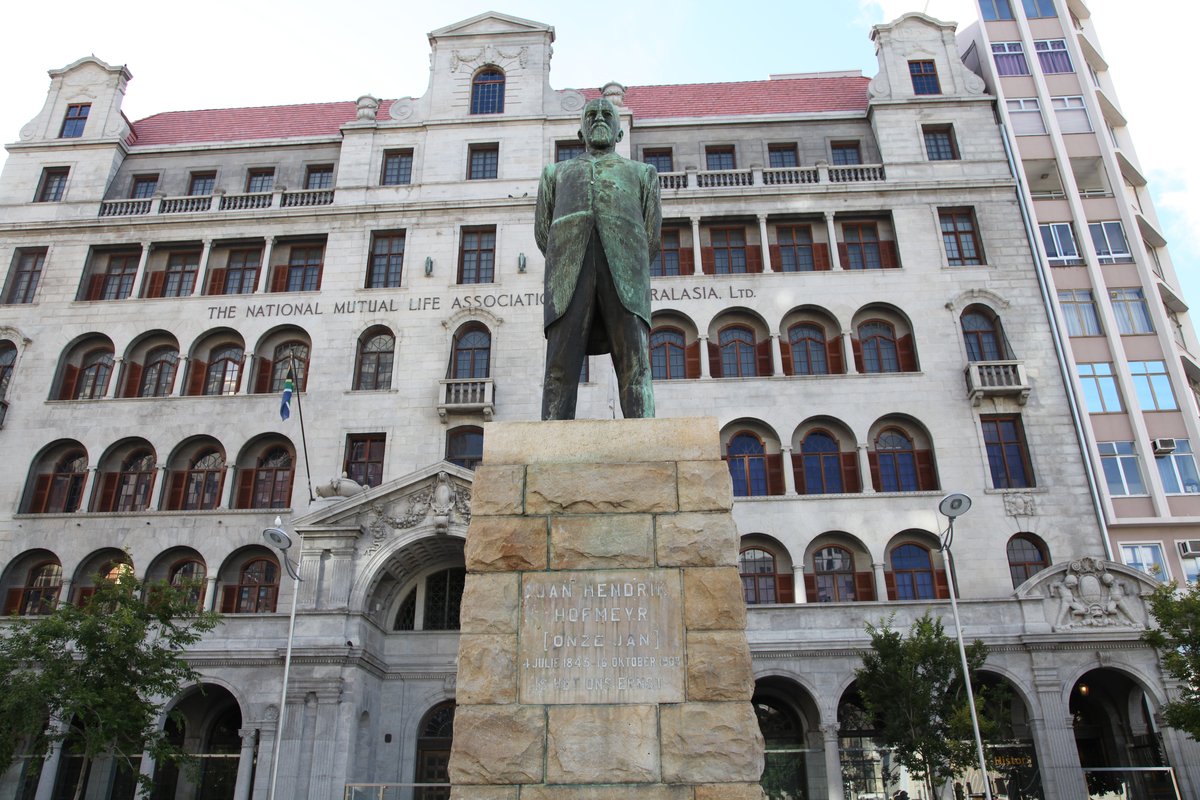
Visiting the Statue of Jan Hendrik Hofmeyr, Cape Town, South Africa: Comprehensive Guide
Date: 14/06/2025
Introduction
Nestled in the historic heart of Cape Town’s Church Square, the Statue of Jan Hendrik Hofmeyr is a compelling site for anyone interested in South Africa’s complex political and cultural landscape. This monument honors Jan Hendrik Hofmeyr, known as “Onze Jan,” a prominent statesman, journalist, and advocate for Afrikaner rights during a period of colonial transformation. Sculpted by Anton van Wouw, the statue not only commemorates Hofmeyr’s leadership and advocacy but also serves as a lens through which visitors can engage with broader themes of linguistic recognition, cultural identity, and public memory in postcolonial South Africa (Britannica, Wikiwand, Cape Town CCID).
This guide provides everything you need to know to plan your visit—covering the statue’s history, cultural significance, practical visitor information, accessibility, nearby attractions, travel tips, and frequently asked questions. Whether you are a history enthusiast, cultural traveler, or curious visitor, you will find valuable insights and recommendations for making the most of your trip.
About Jan Hendrik Hofmeyr and the Statue
Jan Hendrik Hofmeyr (1845–1909) was a pivotal figure in South African politics, journalism, and the cultural advocacy movement. As leader of the Afrikaner Bond, he promoted the interests of Dutch-speaking South Africans and played a key role in the movement for linguistic parity, which led to Dutch becoming an official language in the 1910 constitution (Britannica). He was instrumental in bridging divides between English and Afrikaans-speaking communities, and his vision of compromise and unity remains relevant today.
The statue, crafted by Anton van Wouw in 1920, is a striking bronze work that captures Hofmeyr in a contemplative pose. The choice of material and artistic execution reflects both the dignity of the subject and the sculptor’s technical brilliance. Van Wouw is celebrated as the father of South African sculpture, and this piece is among his most important public works (Wikiwand, Cape Town CCID).
Historical Context and Symbolism
The monument’s location in Church Square is significant—surrounded by the Slave Lodge, Groote Kerk, and St. George’s Cathedral, it stands at the intersection of colonial, religious, and civic history (South Africa Blog). Hofmeyr’s advocacy for linguistic and cultural self-determination is memorialized here, but so too are the tensions and exclusions of South Africa’s colonial era. The juxtaposition of the statue with nearby sites of enslavement and resistance invites reflection on historical complexity and ongoing debates about representation in public art.
The statue has also been a focal point for contemporary protest and dialogue. In 2015, it was covered with a cloth bearing the words “A black woman raised me,” echoing broader national debates around colonial monuments and memory (Wikiwand). Such acts highlight South Africa’s evolving relationship with its past and the importance of engaging with history critically and inclusively.
Visiting Information
Location & Access
- Address: Church Square, Cape Town CBD, at the intersection of Parliament and Spin Streets.
- Nearby: Groote Kerk, Slave Lodge, St. George’s Cathedral, Greenmarket Square.
Church Square is easily accessible by foot, public transport (MyCiTi bus, train), taxi, or rideshare. Limited street parking is available; public transport or parking at nearby centers is recommended (Trek Zone).
Visiting Hours & Entry
- Open: 24 hours a day, 7 days a week (Church Square is a public space).
- Tickets: No entrance fee or ticket required for the statue or square.
- Best Times: Daylight hours are recommended for safety and the best viewing/photography.
Accessibility
- Wheelchair Access: Yes—paved paths and ramps; some cobblestone areas may require caution.
- Nearby Facilities: Accessible restrooms at the Slave Lodge Museum and Golden Acre Shopping Centre.
Visitor Experience
The Statue and Its Setting
- Artistic Details: Bronze, life-size or slightly larger, mounted on a stone plinth. Hofmeyr is depicted in formal attire with a thoughtful expression (Wikiwand).
- Surroundings: Shaded benches, mature trees, and interpretive signage (limited—use mobile resources for deeper context).
- Photography: Encouraged; best in early morning or late afternoon light.
Safety & Practical Tips
- Safety: The area is generally safe during daylight due to proximity to government and tourist sites. Exercise usual city precautions.
- Amenities: Restrooms and refreshments available at nearby shopping centers and museums.
- Weather: Cape Town enjoys mild weather; bring water, sunscreen, and a hat, especially in summer.
Nearby Attractions
- Groote Kerk: One of the oldest churches in South Africa, adjacent to the square.
- Slave Lodge: A museum detailing the history of slavery and human rights in the Cape (CapeTownMagazine).
- St. George’s Cathedral: Known for its role in the anti-apartheid movement.
- Greenmarket Square: Vibrant market with crafts and souvenirs.
- Company’s Garden: Historic park with museums and additional statues.
- Long Street: Famous for Victorian architecture, shops, and nightlife.
Guided Tours & Events
- Walking Tours: Many local operators include Church Square and the Hofmeyr statue on historical routes, providing expert commentary.
- Special Events: Church Square occasionally hosts markets and commemorative events—check local listings for schedules.
Cultural and Contemporary Relevance
The statue is both a site of memory and a catalyst for debate. It represents Hofmeyr’s legacy of linguistic advocacy and compromise but also stands within a contested landscape of colonial monuments. Its proximity to the Slave Lodge and commemorative plaques for enslaved people enriches its significance and invites critical engagement with South Africa’s past (South Africa Blog).
Frequently Asked Questions (FAQ)
Q: What are the visiting hours?
A: Church Square and the statue are accessible 24/7; daylight hours are best for safety and viewing.
Q: Is there an entrance fee?
A: No, access to the statue and square is free.
Q: How do I get there by public transport?
A: Train (7-minute walk from Cape Town station), MyCiTi bus, taxi, or rideshare.
Q: Are guided tours available?
A: Yes, many walking tours of the historic city center include Church Square.
Q: Is the site accessible for people with disabilities?
A: Yes, with paved paths and ramps; nearby facilities are accessible.
Q: Can I take photos?
A: Absolutely! Respect the monument—do not climb on the statue or plinth.
Visitor Recommendations
- Combine Visits: Explore nearby museums and heritage sites for a fuller experience.
- Join a Guided Tour: Gain deeper insight into the area’s layered history.
- Plan for Comfort: Dress appropriately, stay hydrated, and plan your route.
- Engage Critically: Reflect on the site’s complex history and ongoing debates.
Visuals and Further Resources
High-quality images and virtual tours enhance your understanding of the statue and its context. For planning and additional background:
Official tourism information: Cape Town Travel
Conclusion
The Statue of Jan Hendrik Hofmeyr is a profound testament to South Africa’s contested history, linguistic struggles, and ongoing journey toward unity and understanding. Its central location, artistic merit, and proximity to key historical sites make it an essential stop for any Cape Town itinerary. Engage with the narratives it represents—both celebratory and critical—and use your visit as an opportunity to reflect on the shaping of public memory in South Africa.
Call to Action
Ready to discover Cape Town’s layered history?
Download the Audiala app for guided audio tours and up-to-date heritage information. Share your experiences with #JanHendrikHofmeyrStatue and connect with a community passionate about exploring South Africa’s rich cultural legacy.
Sources
- Statue of Jan Hendrik Hofmeyr, 2025, Wikiwand
- Jan Hendrik Hofmeyr Biography, 2025, Britannica
- Cape Town Historical Heritage Walking Tour, 2025, CapeTownMagazine
- Public Art in Cape Town, 2025, Cape Town CCID
- Church Square and the Slave Lodge, 2025, South Africa Blog
- Statue of Jan Hendrik Hofmeyr Visitor Info, 2025, Trek Zone
